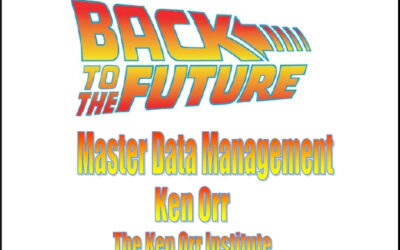Competitive pressures, poor investment returns, substantial claims payouts, demanding customers and independent agents, new regulatory challenges and complicated processes have led to increased complexity in insurance operations. Insurance professionals must be flexible and move quickly to respond to the conditions in their industry and achieve the three strategic objectives necessary to thrive: delivering new services, increasing customer loyalty and achieving a lower cost structure.
Articles by: BPMInstitute.org
How Much Will Your SOA Cost?
I’m consulting now…at the project and strategy levels…and thus finding that a lot of real work needs to be done to get SOAs up-and-running. For most organizations, the first step of their SOA project is to figure out how much this SOA will cost. Thus, you can budget appropriately and obtain the funding.
It’s a good first step, but most organizations that want to build an SOA don’t have a clue how to approach the cost estimation process. In many cases, they grossly underestimate the cost of their SOA, hoping their bosses and accountants won’t notice later.
BPM vs ISO
Often I am asked, “What is the difference between BPM and the popular quality method known as ISO?” My experiences both in Operations Management and in Business Process Management have provided some major contrasts in the two approaches.
Business Process Management – The Design Phase
Recently somebody asked me what some of the key reasons of failure are for new teams adopting Business Process Management or SCOR. The number one risk is obvious: lack of sponsorship. A close second however is the inability to prove the value (of the team). One of the biggest start-up problems is the focus on getting a project started – get busy. That’s really when the clock starts ticking for proving your value (Now the company is actually spending money on your great idea). Many (start-up) teams have problems getting beyond the analysis phase of a project.
SOA Governance
SOA needs to be grounded in reality of making money, reducing costs and managing change. These are business imperatives. Left unchecked, SOA can become an exercise in doing very clever technical stuff for no business gain. SOA governance helps to guide IT resources to where they can be best applied. It can also help to identify areas of utility where costs can be minimised.
Ideally, it should be planned for and baked into SOA from the start.
Master Data Management – Creating A Unified Business Vocabulary for SOA
Creating a unified data architecture is a key component of any enterprise SOA initiative. Rapidly building business services requires achieving a common vocabulary across disparate business systems (i.e. common definitions of “customer,” “order,” “product,” etc.).
This Round Table will explore the available approaches to enable the rapid design of such a vocabulary. The strategic agility objectives of SOA are complemented by the similar objectives employed by MDM.
Aligning Organizational Performance
Alan Ramias is a Partner of the Performance Design Lab (PDL). He has had 25 years of experience in performance improvement and organization effectiveness.
Alan Ramias is a Partner of the Performance Design Lab (PDL). He has had 25 years of experience in performance improvement and organization effectiveness. Alan joined The Rummler-Brache Group in 1991 and led major successful performance improvement engagements within Fortune 500 companies. Upon leaving RBG, Alan founded his own consulting company, where he continues to practice in the field of performance consulting. He is also involved in several organizational restructuring initiatives in the U.S. and Asia.
Ramias maintains that achieving organizational results depends on two things: measuring the right processes for performance feedback, and managers knowing what to do with the feedback they receive.
BPMS Watch: Learning to “Do” BPM
Recent research by Professor Yvonne Antonucci of Widener University turned up an amazing finding. Her survey of 146 companies involved in BPM attempted to answer the question, “Is there a gap between current and needed process skills in organizations today?” What she found was a whopping 54% of companies said they wanted to send employees to external BPM training but were “unable to find appropriate training mainly because they did not know what training was needed.”
BPA Can Reduce Cost and Complexity
Though related, business process automation is not business process management, which is designed to coordinate workflow among IT systems and humans.
Business-Driven SOA
We hear about “Business Driven SOA” so much that it’s almost a cliché. And, like most clichés, we don’t really know what it means. If SOA is not that well understood, making it business driven is even more elusive. In this article, I’ll describe what business driven SOA is, and illustrate this with an example.
First, let’s start with what it’s not. It’s not web services. From the business perspective, we don’t care what technology is used to implement SOA. We can expand on this principle and say it’s not an SOA platform or product suite (sorry vendors).



















